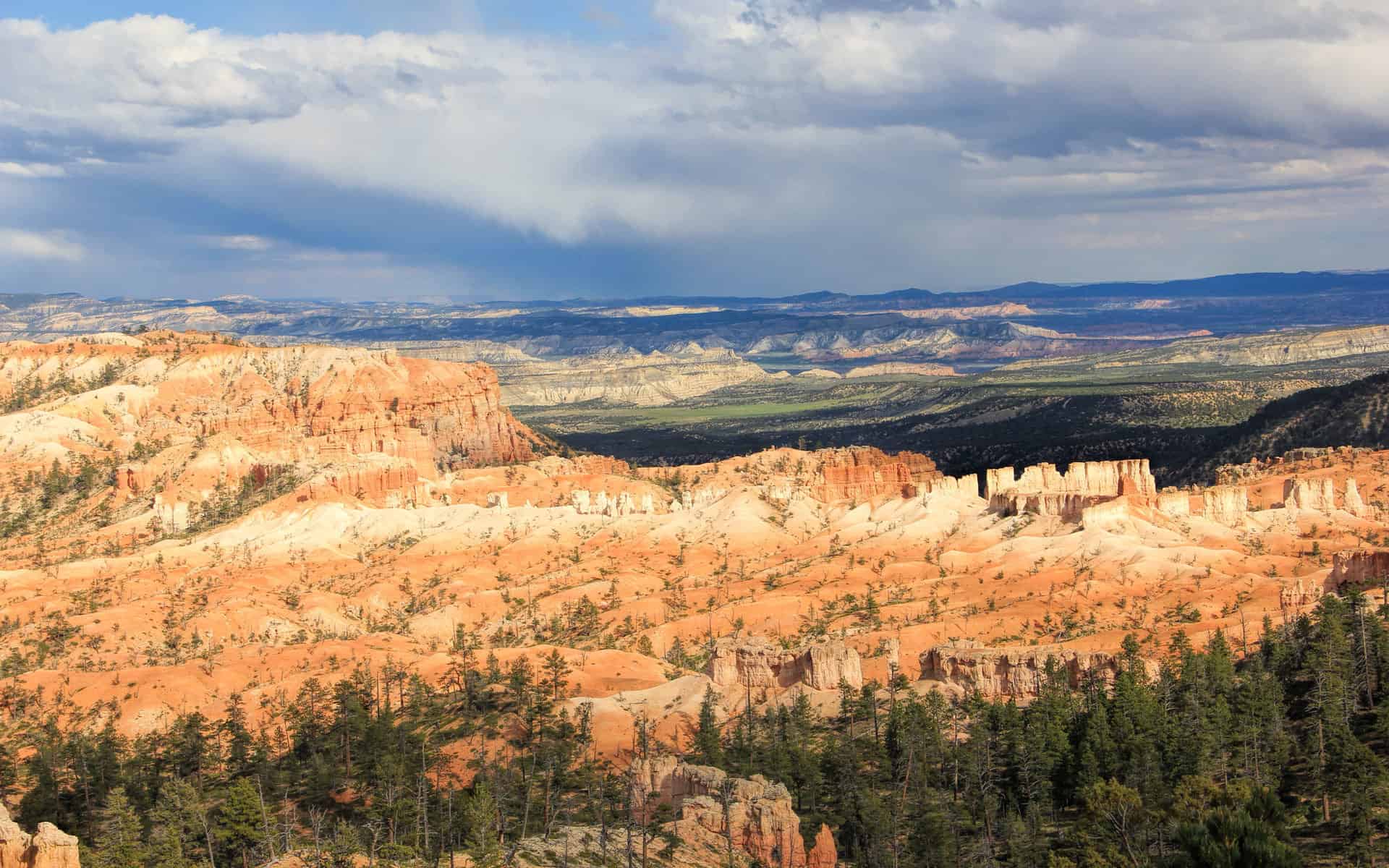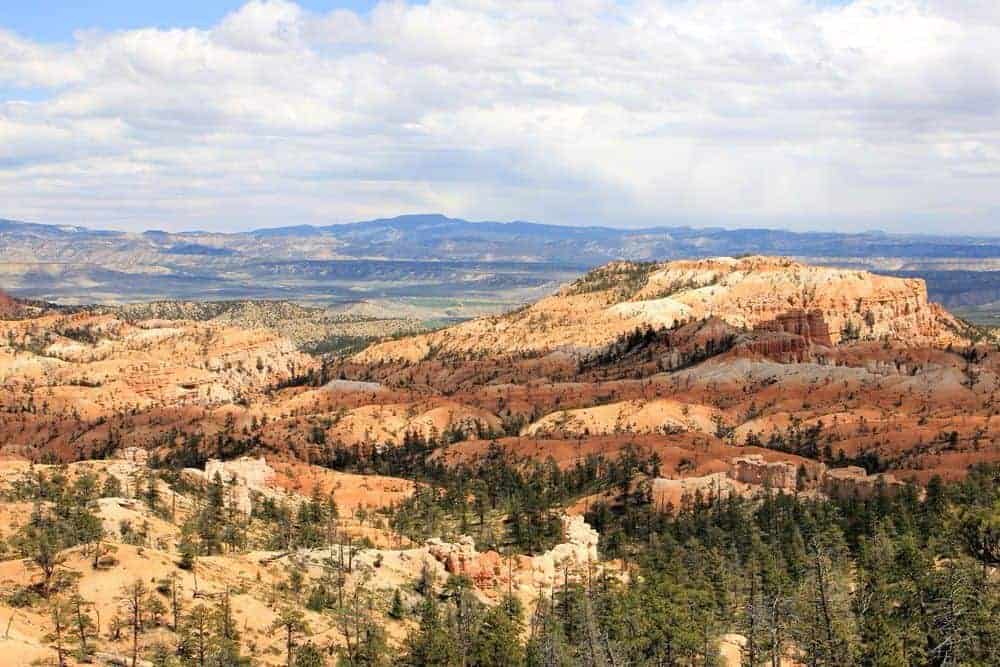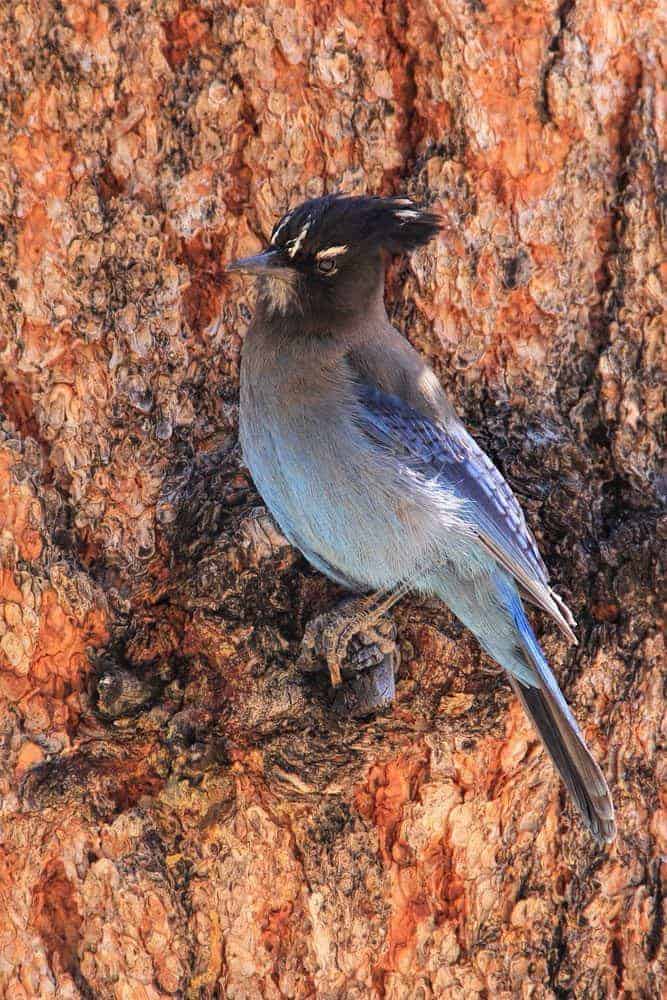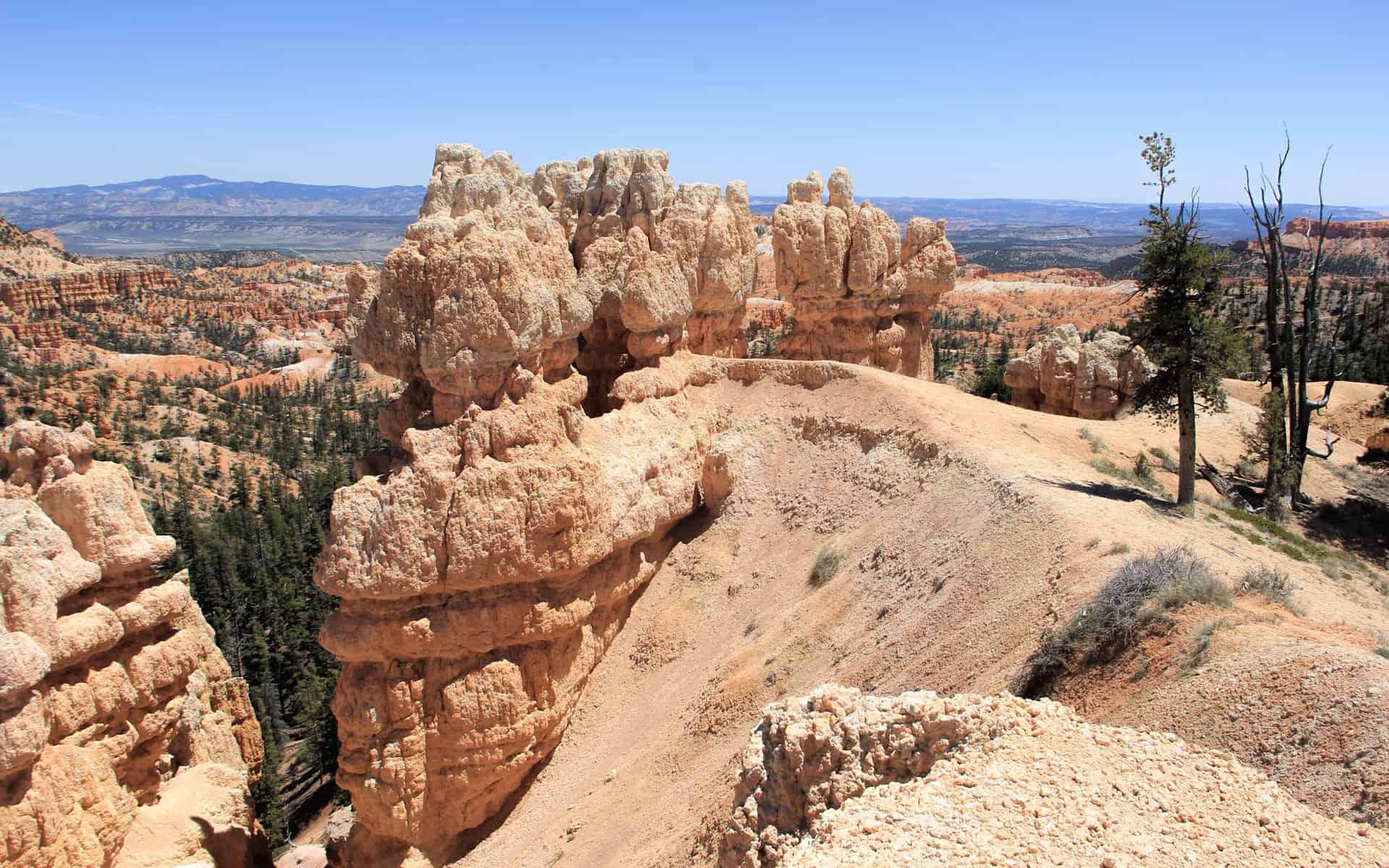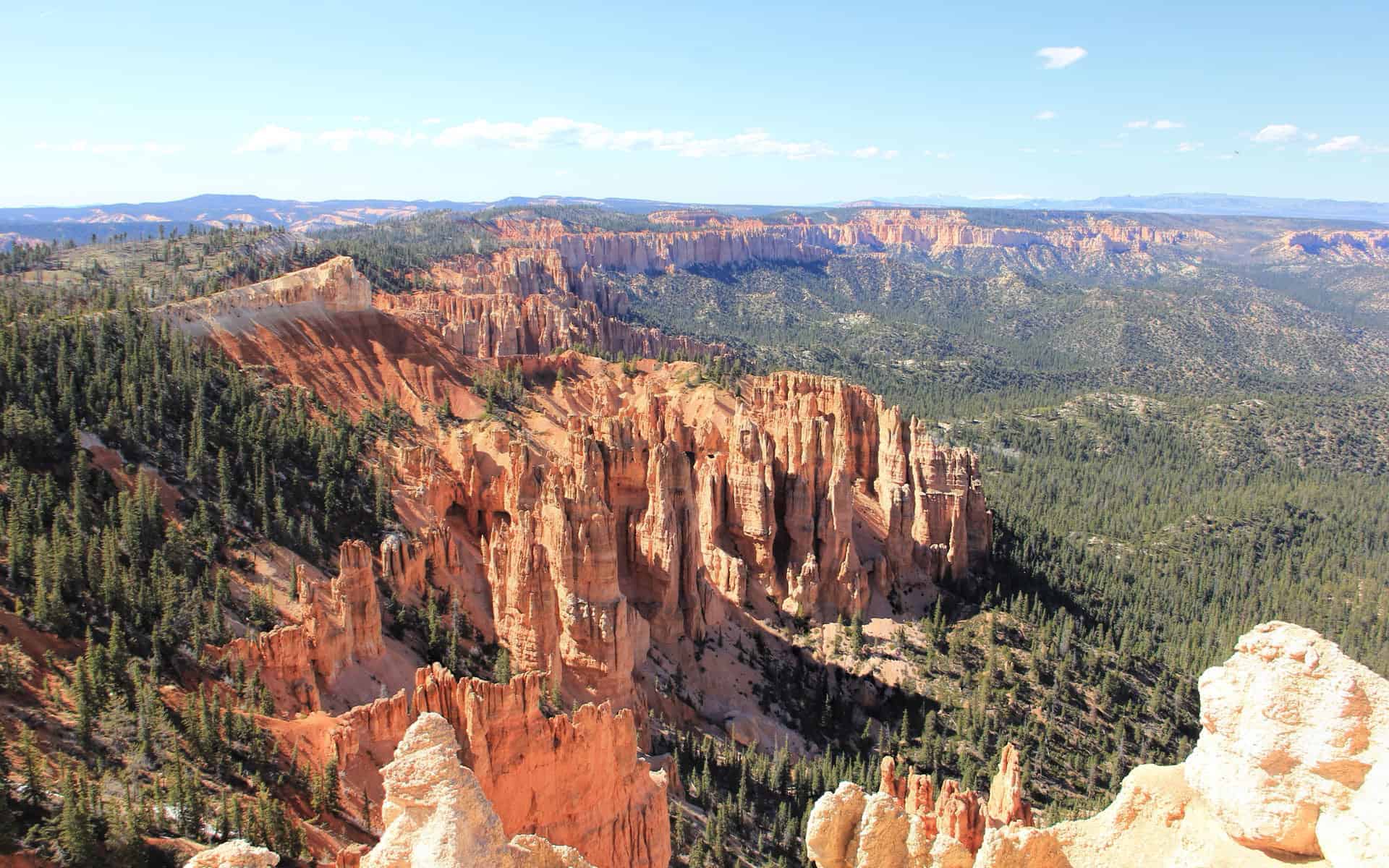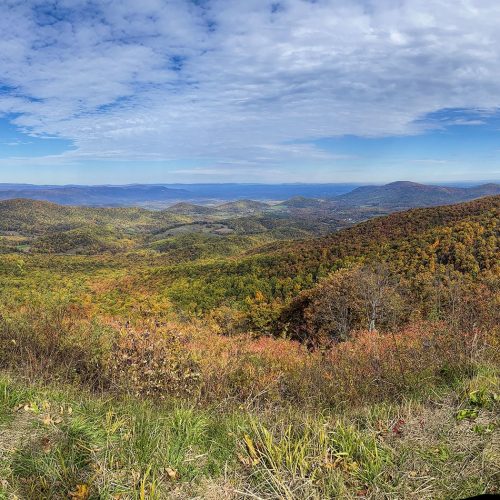Bryce Canyon National Park isn’t actually a canyon, it’s a group of 14 huge natural amphitheaters that have been eroded into beautiful formations, the most famous being the hoodoos (odd-shaped pillars of rock left standing from the forces of erosion). Bryce Canyon has the largest collection of hoodoos in the world.
“Beginning about 55 million years ago, the lower pink layer was deposited as muds and silts in meandering streams and shallow lakes. The upper white layer represents limestone deposited in a shallow lake system. Sedimentary rocks are softer than other rocks and therefore, more impacted by erosional forces. At Bryce, the principle form of weathering is “freeze-thaw” as water gets into small cracks, freezes and expands at night. The numerous cracks in these rock layers are due to a major uplift that exposed the Colorado Plateau, stretching across four western states.”
There are multiple hikes here (completed over multiple days) including Navajo and Peekaboo Loop, Tower Bridge Trail, and Fairyland Point.


